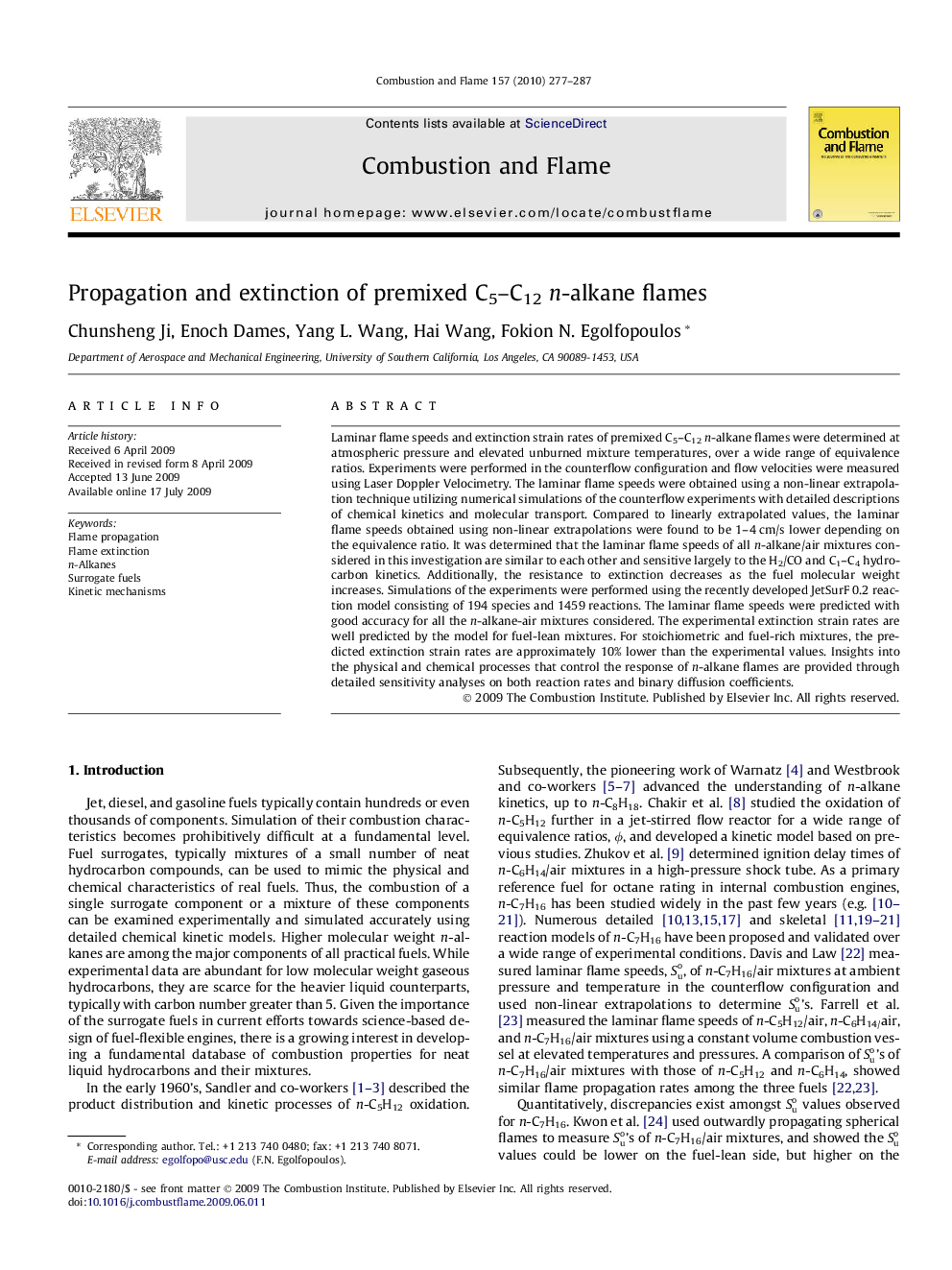| Article ID | Journal | Published Year | Pages | File Type |
|---|---|---|---|---|
| 169735 | Combustion and Flame | 2010 | 11 Pages |
Laminar flame speeds and extinction strain rates of premixed C5–C12n-alkane flames were determined at atmospheric pressure and elevated unburned mixture temperatures, over a wide range of equivalence ratios. Experiments were performed in the counterflow configuration and flow velocities were measured using Laser Doppler Velocimetry. The laminar flame speeds were obtained using a non-linear extrapolation technique utilizing numerical simulations of the counterflow experiments with detailed descriptions of chemical kinetics and molecular transport. Compared to linearly extrapolated values, the laminar flame speeds obtained using non-linear extrapolations were found to be 1–4 cm/s lower depending on the equivalence ratio. It was determined that the laminar flame speeds of all n-alkane/air mixtures considered in this investigation are similar to each other and sensitive largely to the H2/CO and C1–C4 hydrocarbon kinetics. Additionally, the resistance to extinction decreases as the fuel molecular weight increases. Simulations of the experiments were performed using the recently developed JetSurF 0.2 reaction model consisting of 194 species and 1459 reactions. The laminar flame speeds were predicted with good accuracy for all the n-alkane-air mixtures considered. The experimental extinction strain rates are well predicted by the model for fuel-lean mixtures. For stoichiometric and fuel-rich mixtures, the predicted extinction strain rates are approximately 10% lower than the experimental values. Insights into the physical and chemical processes that control the response of n-alkane flames are provided through detailed sensitivity analyses on both reaction rates and binary diffusion coefficients.
